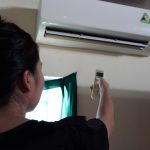Optimizing Energy Consumption for Green Buildings
The shift towards green buildings is an inevitable trend in the construction industry, driven by the global commitment to achieve net-zero emissions by 2050. The pressing goal is to reduce energy consumption, which currently accounts for 35%-40% of a country’s total energy usage.
Energy efficiency is of paramount importance in green building definitions, as outlined in Government Decree No. 15/2021/NĐ-CP. It is mandatory for investors pursuing any green building certification to provide energy simulation results that demonstrate the energy performance of the entire building.
To tackle the energy challenge in green buildings, investors explore all effective solutions. Among these, thermal insulation materials are a top priority as they comprehensively reduce energy losses through the building envelope, which constitutes the largest surface area of a structure.
According to The Green Age, buildings lose heat through walls (35%), roofs (25%), windows (15%), and floors (10%). Therefore, using sustainable and thermally efficient materials can significantly enhance a building’s energy performance and earn additional points in green building assessments.
One such solution that has proven its energy-optimizing capabilities in numerous green buildings is the Saint-Gobain Isover glass wool insulation. This lightweight and sustainable building material is part of Saint-Gobain’s diverse ecosystem of green solutions, offered by a pioneer in the green construction movement.
Saint-Gobain Isover Glass Wool Insulation: An Effective Solution
Meeting the ASTM C518 standard for thermal insulation, Saint-Gobain Isover glass wool performs efficiently in temperatures up to 232°C. It minimizes energy losses from the building and limits the absorption of external heat radiation.
Its unique microstructure, comprising interlaced long glass fibers, also delivers superior acoustic insulation. Additionally, the product holds the EUCEB certificate in Europe and the international VOC certificate, ensuring it is free from formaldehyde and volatile organic compounds (VOCs).
Saint-Gobain Isover glass wool is applicable in eight critical areas, contributing up to 60% of the total points in the four most popular green building rating systems: LEED, EDGE, LOTUS, and GreenMark. Specifically, it accounts for 27.3% of points in the energy and climate category, 6.3% in thermal comfort, 9.9% in acoustic comfort, 4.5% in indoor air quality, 11.3% in life cycle costs, 15.8% in life cycle impacts, 4.1% in construction waste, and 9% in sustainable sourcing.
Beyond its exceptional performance, Saint-Gobain Isover glass wool is valued for its versatility. Available in semi-rigid and flexible panels, it can be used for exterior walls, load-bearing walls, hollow-core concrete walls, interior walls, roof tops, and undersides. It can also be combined with gypsum wall and ceiling systems to enhance thermal insulation.

Saint-Gobain Isover glass wool insulation applied at the Dwight International School in Hanoi, Vietnam.
The energy-saving potential and application scope expand further when Saint-Gobain Isover glass wool is combined with other products within the ISOVER® solution system. When used with Saint-Gobain Isover mineral wool and Climaver ductwork solutions, it helps save up to 46% of the energy required for air conditioning a building.
Bitcoin Mining Tools Reach Record Consumption and Speed
After recovering from a long-lasting downtrend season, Bitcoin miners are back in survival mode – scrambling to find ways to stay profitable in a highly competitive market. With the recent surge in Bitcoin’s price, there is renewed optimism among miners, but challenges still remain. The increasing difficulty in mining, rising energy costs, and the need for more efficient mining equipment are just some of the hurdles they face. As the industry evolves, miners must adapt to new strategies and technologies to stay ahead. In this ever-changing landscape, only the most skilled and resourceful miners will thrive. Are you up for the challenge? Join us and become a part of the next generation of Bitcoin miners who will shape the future of this transformative technology.
Revised Dry and Total 2024 Supply Plan Adjustments
With signs of a strong economic recovery increasing electricity demand, the Ministry of Industry and Trade has decided to adjust the electricity supply plan to keep up with the reality. Accordingly, the total electricity produced and imported in the country in 2024 is 310.6 billion kWh, of which 150.916 billion kWh will be in the dry season and 159.684 billion kWh will be in the rainy season.








































